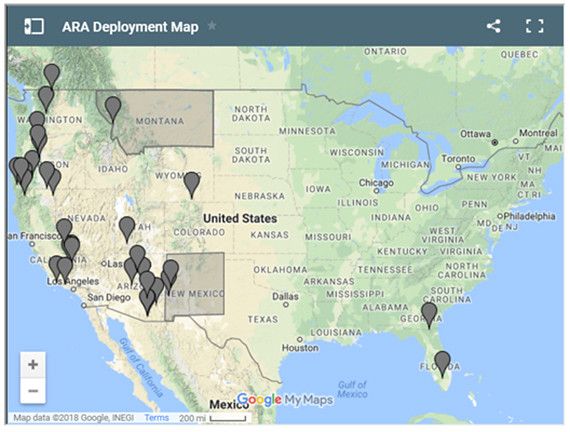
Air Quality Awareness Week raises mindfulness about the importance of air quality issues. The USDA Forest Service commemorates the week and its 2018 theme “Air Quality Where You Are” with partners. This year, the Forest Service is featuring one area where air resource management is essential - wildland firefighting.
Recognizing the growing threat that wildfire smoke poses to the health and safety of the public and fire personnel, the Forest Service partnered with other federal, state and tribal agencies to implement a proactive and determined response. This included development of new modeling techniques to more accurately characterize emissions from wildfires. It also included creation of a new position in the fire organization – the Air Resource Advisor (ARA).
ARAs are technical specialists with expertise in air quality science; including monitoring, smoke modeling, pollutant health, thresholds and smoke risks and mitigation. These specialists are trained to work on issues related to smoke from a wildland fire, and are deployed nationwide.
During wildfire incidents, their objective is to provide timely, science-based information related to smoke impact and forecasts. They communicate these impacts to incident teams, air quality regulators, fire personnel and the public.
These same skills are used on prescribed fires on the ARA’s home unit.
In 2017, two air resource specialists in the Eastern Region of the Forest Service, Trent Wickman and Chuck Sams, served on four different fires as ARAs. Trent shared his thoughts about these assignments. “I enjoy working on wildfires and prescribed fires as an ARA because the work I do really makes an immediate impact in people’s lives.”
The Forest Service’s air resource management is multi-faceted, interdisciplinary and mission critical. It helps to protect air quality through compliance with specific Federal and state laws supporting the Forest Service’s mission to: sustain the health, diversity and productivity of the Nation’s forests and grasslands to meet the need of present and future generations.

